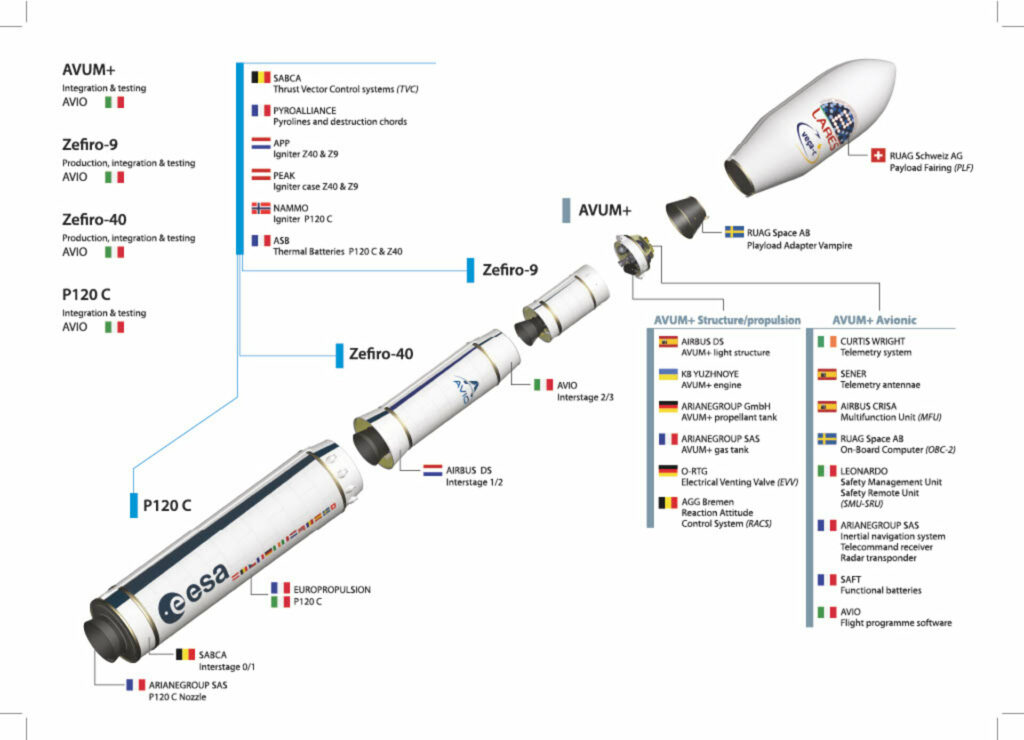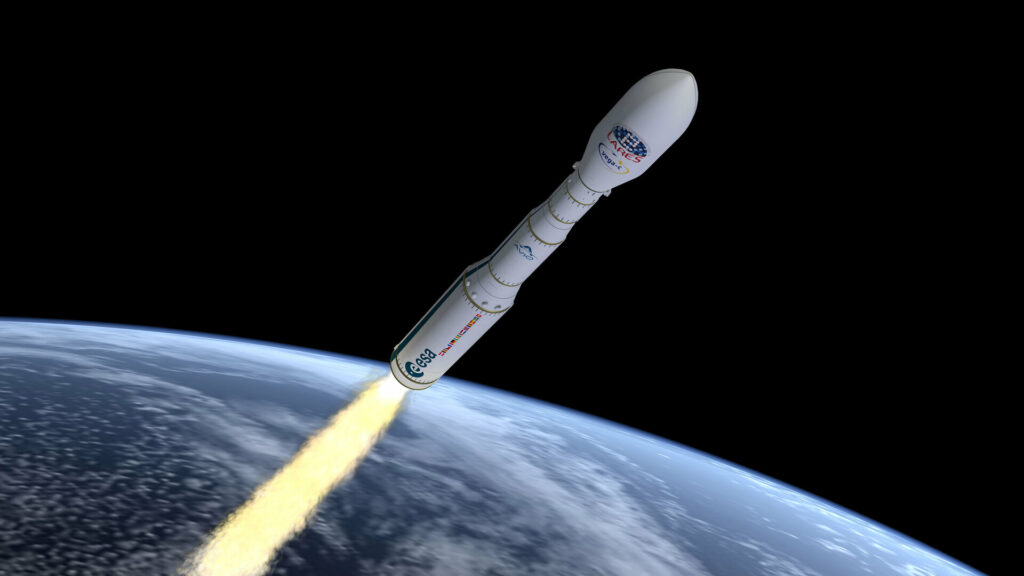ESA has set a date for the first launch of the new Vega-C rocket. It will take place on July 13. The RD-843 engine, created by Yuzhnoye Design Bureau, is installed on the upper stage of the rocket.
Technical device of the Vega-C rocket
Vega-C is a modification of the Vega light rocket designed to launch cargo into polar and low Earth orbits. It is launched from the territory of the Kourou cosmodrome in French Guiana.

The rocket has a four-stage design. The first three stages of the carrier are equipped with solid-fuel engines, the fourth is liquid. The RD-843 power unit is installed on it, which was developed by the Yuzhnoye Design Bureau and is mass-produced by the Southern Machine-Building Plant. Its distinctive feature is the possibility of multiple launches during flight (up to 5 inclusions). Thanks to this, Vega can provide satellite breeding in different orbits.
Vega-C differs from the basic version by having more powerful engines on the first and second stages. The upper stage has also been upgraded, in particular receiving large fuel tanks. All this made it possible to increase the payload capacity of the rocket. If Vega is capable of putting 1.5 tons of cargo into a 700-kilometer polar orbit, then for Vega-C this figure is 2.2 tons. Due to the increase in power, the size of the cargo compartment has also increased. The rocket itself has also “grown up”: its height is 35 meters, diameter 3.3 meters, weight (when refueled) 210 tons.
Vega-C First Launch Date
The first launch of Vega-C will take place on July 13. The main cargo of the debut mission is the Italian satellite LARES-2, designed to measure the Lense-Thirring precession. Also on board are six experimental cubesats provided by Italy, France and Slovenia. The devices are assigned various tasks — from assessing the effect of radiation on on-board electronics, to conducting experiments on growing plants in microgravity.

Recall that recently ESA postponed to the beginning of 2023 the debut launch of the same Ariane 6 rocket.
According to https://www.esa.int
Follow us on Twitter to get the most interesting space news in time
https://twitter.com/ust_magazine

